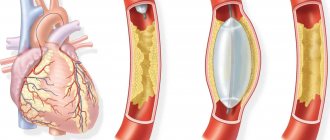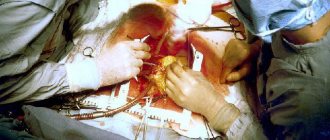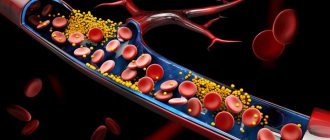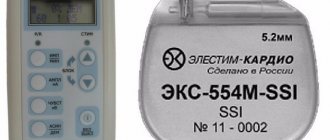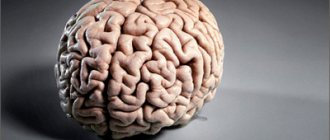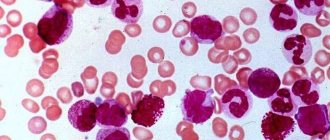The level of development of modern medicine allows us to fight many diseases, including cardiological ones. Surgical treatment of damaged blood vessels and the heart during ischemic diseases or heart attacks allows us to save millions of lives every year. One of the most common types of surgical intervention for these diagnoses is stenting, which can prevent these severe complications.
Let's consider the technique, patient reviews about life after stenting and features of rehabilitation. We will try to answer pressing questions - is it dangerous, how long do patients live after this procedure, and whether they are given a disability group after surgical treatment.
Coronary stenting of heart vessels - what is it?
The myocardium of the heart is very sensitive to hypoxia and, due to its constant work, needs a stable blood supply. Blood flow in the heart is provided by a network of circumflex arteries (CA), divided into three main branches - the right and left coronary arteries (RCA and LCA, respectively), as well as the anterior interventricular branch (LAD). Some cardiologists distinguish the heart's own blood flow into a separate system and even compare it with the main circulation circles.
Attacks of ischemic transient attacks, angina pectoris, heart attacks and most cardiac complaints are associated with ischemic processes in the heart muscle - the myocardium. The etiological causes of ischemia may be atherosclerotic changes in the coronary vessels, their spasm, the formation of wall thrombi, impaired tone and elasticity. Against the background of these processes, the lumen of the arteries narrows and the heart does not receive the required volume of blood flow.
To restore the patency and lumen of blood vessels, aortocoronary stenting of the heart vessels is performed. During this manipulation, a structure in the form of a spring-mesh is installed in the artery with the lesion, which restores the physiological diameter of the coronary vessel and ensures stable blood flow. Today, such heart surgery is performed in a cardiac surgery hospital for all patients who have suffered a myocardial infarction.
What is a stent, types
The lumen of the cardiac artery is restored with a stent - a thin metal prosthesis made in the form of a mesh tube. It presses the plaque into the walls of blood vessels and pushes them apart, acting as a frame. The device prevents the artery from narrowing again.
Characteristics of modern stents:
- Made from an alloy of metals (cobalt and chromium). The material does not cause a rejection reaction from the body and ensures the strength of the product.
- They have the shape of a tube 10 mm long, 0.25-0.6 cm in diameter.
- The walls of the stent are mesh. This allows you to change the diameter of the device. The smallest one is used to introduce the product to the site of an atherosclerotic plaque, and the larger one allows you to expand the narrowed area.
- The walls of the stent are coated with a special compound. It prevents blood from clotting on the device. The substance gradually comes out, which prevents the formation of blood clots on the device itself.
Technique of the operation
Angioplasty and stenting of the arteries of the heart and aorta are performed in a cardiac surgery operating room, where there is the necessary technical equipment and specialists who are proficient in this surgical practice. Like other heart surgeries, this intervention requires constant monitoring of the patient’s condition and high technological equipment of the clinic.
Almost one hundred different types of vascular stents are available on the global pharmaceutical market. Externally, they are coated with a special coating - a drug coating (eluting stent), which repels blood clots and prevents blood from clotting around the stent. There are various types of them available for sale, depending on the shape and diameter - in the form of meshes, rings and tubes, so you can choose the one most suitable for a specific clinical situation.
Stents should not be confused with scaffolds - these are absorbable structures that are installed temporarily and serve as a transition point before the placement of a real stent.
Regardless of the localization of the pathological process, be it the aorta, LAD or LAD (right descending artery), the operation is carried out in several mandatory stages:
- Anesthesia. The operation does not last long, so local anesthesia is performed on the surgical area - the femoral-inguinal one of the limbs.
- The largest artery of the femur is punctured, after which a catheter with a stent with a small balloon at the end is inserted into it.
- In parallel with the insertion and advancement of the catheter, a bolus of iodinated contrast agent is administered through the arm. Thanks to it, the vessels are clearly visible on x-rays and the surgical team can monitor the progress of the catheter.
- After the catheter has reached the required area in the vessel, a stent is placed. To do this, the balloon, which is located at the very end of the catheter, is inflated with air. Balloon dilatation expands the walls of the affected area and presses the stent against them, restoring the physiological diameter of the artery.
Low blood pressure after a heart attack: what to do, recommendations from specialists
According to statistics, it is a heart attack that in most cases causes the death of a patient with pathology of the cardiovascular system. People who have suffered an attack very often turn to doctors with the problem of low blood pressure. This condition is caused by poor circulation in the body.
Thus, after a heart attack, the coronary vessels lose their former elasticity, so the pressure must be constantly monitored, measured regularly and, in case of unforeseen situations, seek qualified medical help.
Read more in this article about the dangers of low blood pressure after a heart attack, what to do, what measures to take first, and what prevention is.
- 1 What to do if you have low blood pressure
- 2 Complications
- 3 Treatment
- 4 Conclusion
What to do if you have low blood pressure
This condition occurs quite often, therefore, after an attack, doctors often recommend that their patients engage in intense physical activity, limit themselves from negative emotional influences, shocks, and eliminate stress factors.
The first thing to do when experiencing an attack of low blood pressure is to lie down for a while (the body should take a horizontal position), and then drink a mug of sweet coffee or tea. It is recommended to prepare a ginseng decoction. If such measures do not help, then you need to call an ambulance. In order to prevent such attacks in the future, you need to follow a certain nutritional system.
The main symptoms of low blood pressure include the following:
- frequent headaches (pulsating tremors mainly in the back of the head and temples);
- feeling of lethargy, fatigue, constant drowsiness;
- feeling of nausea in the morning, sometimes vomiting;
- disturbing chest pain (caused by decreased vascular tone).
Also, the main symptoms of low blood pressure after a heart attack include weather dependence and psychological problems. The person becomes irritable, is bothered by constant mood swings, and has memory problems. Against this background, the patient often develops depression.
The patient's condition may deteriorate sharply due to a sudden change in weather conditions. Magnetic storms also have a strong impact on health. As noted earlier, the patient after a heart attack is in a state of constant fatigue. Thus, by the end of the working day, even if the work is not exhausting and does not involve heavy loads, a person feels very exhausted mentally and physically.
Less noticeable symptoms of low blood pressure include a persistent feeling of lack of air, which manifests itself in the fact that a person yawns very often. Hypotension also affects the limbs. They often go numb and show increased sensitivity to low temperatures.
Complications
Low blood pressure is very dangerous if systolic pressure drops below sixty millimeters of mercury. This is an alarm bell because in most cases it leads to a sudden loss of consciousness.
This condition is explained by the fact that after a heart attack, blood vessels lose their former elasticity, and this negatively affects blood circulation, and therefore the required dose of oxygen does not reach the brain.
Low blood pressure can also affect kidney function. Over time, they cease to perform one of the most important functions - filtering urine, and then they may stop working altogether.
Against the background of hypotension, the patient often experiences an enlarged heart. In addition, patients often complain that their limbs are swollen and their normal heart rhythm is disturbed. This condition is extremely dangerous, so a person should immediately consult a doctor to bring the body’s condition back to normal.
To prevent low blood pressure, most experts advise their patients to undergo a course of treatment sessions in a pressure chamber. Thus, the level of oxygen and blood pressure in the body quickly normalizes, and the patient’s immunity gradually strengthens.
Treatment
Currently, there are quite a large number of methods for treating symptoms of post-infarction conditions. Therapy will directly depend on the patient’s method and living/working conditions.
First of all, doctors recommend gradually reducing stress, both physical and psychological. If daily work is too exhausting and in the past has led to severe stress and overwork, then the doctor will most likely recommend transferring to another position (less exhausting) or changing your occupation altogether.
As noted earlier, during attacks a person must independently help himself: take a horizontal position and try to relax. Sweet tea and coffee will help bring your blood pressure back to normal.
In the case when a patient exhibits symptoms of a post-infarction condition constantly, this means that he does not follow certain instructions from the attending physician.
Doctors recommend regularly measuring and monitoring your blood pressure. Too frequent and systematic decrease indicates that a second attack is already close.
Modern treatment methods involve the use of blood ozonation procedures. Such therapy is carried out only with the permission of the attending physician and consists of introducing saline solutions containing ozone into the body through droppers.
This technique can achieve normalization of metabolic processes in the body, cleanse it of waste, toxins and other harmful substances, and also strengthen the immune system.
In addition, such a procedure promotes overall health and serves as an excellent prevention of colds. After the procedures, there is a noticeable improvement in the psycho-emotional state.
The patient becomes less irritable, and against this background he is less and less tormented by insomnia and stress.
Indications for coronary stenting
Coronary aortocoronary stenting has a certain number of indications, but is performed only when all other methods of treating vascular pathology do not have the desired effect. Doctors identify the following main indications for stent placement:
- Ischemic myocardial damage against the background of stenosing atherosclerosis, in which atheromatous plaques block the lumen of the vessel by more than 50%.
- Acute, difficult-to-control attacks of angina pectoris that occur with minor physical exertion.
- Acute coronary syndrome with a high risk of progression to infarction.
- The first six hours during a heart attack when the patient’s general condition has stabilized.
- Repeated blockage or stenosis of an artery after angioplasty or another surgical procedure.
Despite a whole group of vital indications for this surgical intervention, there are a number of contraindications for which coronary stenting is not performed. These include:
- Lack of stabilization of the patient's condition - depression of consciousness, shock, variable pressure, the presence of renal, hepatic, or any other failure of one or more vital organs.
- Pronounced changes in the coagulogram are increased viscosity and blood clotting.
- Individual hypersensitivity reactions to iodine-containing contrast agents.
- The presence of multiple stenoses.
- Malignant neoplasms that cannot be treated.
- Damage to an artery with a lumen diameter of less than 3 mm.
Life or no life
Without a doubt, life after stenting the coronary arteries is busy and not monotonous; after the operation, patients feel much better, putting nitroglycerin in the box, and the question of whether stenting gives disability disappears by itself. In general, it all depends on the individual and his lifestyle before. Active people do not deny themselves walks and active sports, so small adjustments do not force them to lie on the couch and sigh about their diagnoses.
The level of development of modern medicine allows us to fight many diseases, including cardiological ones. Surgical treatment of damaged blood vessels and the heart during ischemic diseases or heart attacks allows us to save millions of lives every year. One of the most common types of surgical intervention for these diagnoses is stenting, which can prevent these severe complications.
Let's consider the technique, patient reviews about life after stenting and features of rehabilitation. We will try to answer pressing questions - is it dangerous, how long do patients live after this procedure, and whether they are given a disability group after surgical treatment.
Preparation for the procedure
Coronary stenting of the heart does not require specific preoperative preparation, however, some diagnostic methods are still necessary. In the case of an urgent condition (for example, with myocardial infarction), a general blood and urine test is taken from the patient, blood coagulation activity, liver function tests, electrolyte balance, markers of cardiac muscle necrosis, ECG, and chest x-ray are examined.
If the operation is scheduled for the patient, then the preoperative examination is performed on a more extensive scale. The doctor gives a referral for 24-hour blood pressure monitoring, coronary angiography, detailed biochemical blood tests, and a lipid profile. During the surgical intervention itself, with a certain frequency (minimum - every hour), the main samples and analyzes are taken again. Thus, the surgical team individually plans the course of the operation and makes ongoing adjustments.
Denial of disability
When a patient is not satisfied with the conclusion of the commission, he has the right to challenge it. The application should be submitted to the same BMSE, the Federal Bureau or the Social Security Authorities.
The examination is carried out no later than 1 month from the date of receipt of the application. Taking into account the results of such an examination, the commission members make a decision.
When a myocardial infarction develops, the doctor conducts a full examination and refers the patient for examination. The main indicators in issuing disability are how severe the loss of ability to work and the ability to self-care are. Based on them, the ITU Bureau makes a conclusion on the assignment of the group.
Previous For people with disabilitiesTerms and procedure for re-examination for disability To solve your problem RIGHT NOW, get a FREE consultation: 8 ext. 536 (all of Russia)
Related topics:
- Disability group disability How to register a disability Health is a relative indicator, modern medicine is able to find deviations from…
- Autism is a disability Disability with autism in children in 2020: group, design Hello, our dear readers! Unfortunately,…
- Disability due to breast cancer Breast cancer is a common disease; it ranks 4th in the structure of cancer diseases in the Russian Federation...
Stenting for myocardial infarction
Stenting after a heart attack is performed urgently after the condition of the admitted patient has been stabilized. With this diagnosis, the vascularization of the heart muscle is impaired. Therefore, it is necessary to perform surgical intervention as quickly as possible before the onset of ischemic-necrotic changes in the myocardium.
Disability or malingering
The issue of disability is also usually a big one, because when a person becomes unfit for work, then receiving compensation payments, at least at first, is critical and extremely desirable, but this process is drawn out, and frankly speaking, it doesn’t help much (at times without even compensating the cost of medicines, the price of which is very affordable).
The issue of disability affects almost all patients with coronary artery disease, and is considered both before and after surgery.
- If coronary artery disease occurs after a heart attack, the patient is immediately hospitalized and, if possible, undergoes angioplasty and stenting in the first hours or weeks of surgery. In this case, disability is most often determined after all the manipulations have been carried out, as well as an examination by a local cardiologist.
- If coronary artery disease occurs without the development of a heart attack, then disability can be obtained without stenting, after appropriate tests, including coronary angiography. If there is enough data to establish IHD, then disability will be established in accordance with the diagnosis.
Cost of heart stenting
As with any other surgical intervention, there is no one specific price for stenting. The cost depends on many components - the patient’s condition, the type of stent, the urgency of the operation, individual characteristics, etc.
On average, the price of a planned operation in Russia is about 100–150 thousand rubles. In Ukraine, the average price range is in the range of 30–40 thousand UAH. In Israeli clinics the cost starts from 13 thousand dollars (SYFFER stent).
Stenting in elderly and senile patients
Endovascular therapy of older and elderly patients is carried out according to generally accepted methods. The difference lies in drug treatment - drugs from other groups are prescribed, and treatment of underlying pathologies is additionally prescribed (most often - coronary artery disease, hypertension, diabetes). The surgical procedure is also planned taking into account these age-related characteristics.
Rehabilitation and life after cardiac stenting
Any patient during rehabilitation after a myocardial infarction and stenting of the coronary vessels of the heart has a lot of questions - from how to behave after this procedure, how and for what period a sick leave is issued, and ending with how long it is allowed to fly on an airplane, sex, sauna, bathhouse and other leisure activities after surgery. According to statistics, the average rehabilitation period ranges from 2 weeks to one month. Let's try to figure out what exactly these numbers depend on.
Recovery after surgery is divided into several periods . The immediate postoperative stage lasts one to two weeks. After the operation, the patient is transferred to a specialized ward with intensive observation. Regular blood sampling is performed for liver tests, lipid profile, and various markers. A contrast MRI is performed, after which doctors make adjustments to the treatment. Ideally, target LDL cholesterol levels in patients after stenting are <3.36 mmol/L.
Rehabilitation after stenting and, accordingly, the duration of sick leave after urgent therapy often depend on the tactics of managing the postoperative period. The term of sick leave after a heart attack and stenting is established by the attending physician of the organization in which the treatment was carried out. There are no legally defined periods of sick leave.
After the early postoperative period, a longer recovery period begins. It includes drug maintenance therapy, regimen modification, adherence to a strict diet, limitation of physical activity and other points necessary for a successful prognosis.
Dietary recommendations
For both men and women, a strict diet after stenting. In this fairly simple way, you can significantly reduce the risk of blood clots, symptoms of atherosclerosis, arterial hypertension, diabetes and other underlying pathologies. Excessively smoked, salty, spicy foods are excluded from the diet. It is not recommended to eat fried mushrooms, meat and other foods - it is better to steam, bake or boil them.
Features of registration of disability
Before referring a patient for MSE (medical and social examination), the doctor sends him for research. They will show the need for examination.
The doctor should fill out form 088/у. He submits an application for a medical examination in order to assign a disability group and select an IPR (individual rehabilitation program).
The doctor specifies the date when you should appear for the examination. The commission has the right to conduct additional diagnostics, study the social and living situation or obtain a work history of the patient undergoing a medical examination.
Attention! All actions carried out by the commission are free. They are covered by compulsory medical insurance. The group is established from the moment an application is submitted to recognize the patient as disabled.
Life expectancy after cardiac stenting and reviews of those who have undergone the operation
No doctor can accurately answer the question of how long patients live after surgery. It all depends on the nature and severity of the disease that led to the need for stenting, as well as on the condition of the myocardium after the therapy and manipulation. In addition, the postoperative period is influenced by the patient’s age and the presence of chronic pathologies.
According to statistics, average data shows almost 95% one-year survival rate, 91% three-year survival rate and almost 86% five-year survival rate. Reviews from people who have undergone this heart surgery are positive in almost 100% of cases, because it not only saved and extended their life, but also significantly improved its quality.
Medicine knows thousands of clinical examples of people who have lived decades after cardiac stenting. For successful rehabilitation and a long healthy life after it, the patient must clearly understand how to live after stenting. It is necessary to strictly follow a diet, strictly limit heavy physical activity, eliminate negative habits and be regularly examined by competent specialists.
Procedure for re-examination
1st disability group is given for 2 years. It is prescribed when the patient is disabled and incapable of self-care. In especially severe cases, lifelong disability may be assigned. Group 2 is assigned for a period of 1 year. The 2nd disability group is assigned for limited ability to work, when the performance of work duties does not involve physical exertion.
A special commission must make a decision on assigning a specific disability group. After a year, the patient again undergoes a medical examination, which must determine the degree of ability to work. If the examination results are negative, if there are relapses of the disease, disability after a heart attack is again assigned and the appropriate group is established.
A disabled person who has received the status of a disabled person must annually undergo a medical commission, which will decide on the extension or termination of disability. During the second examination, he must provide the same package of documents as during the first passage of the commission. But, in addition to the main package, he must have a rehabilitation card and a certificate of disability received earlier.
The rehabilitation card must contain marks confirming that the patient is striving for a cure and has completed the prescribed rehabilitation measures and therapeutic procedures. The documents must also contain a document from the employer confirming that he is ready to provide the established work schedule and create certain conditions for performing work duties.
